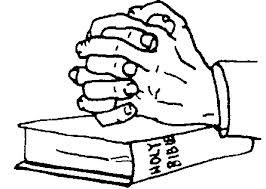
Custom Search
|

To receive notice of each days Bible Study,
please go to my Twitter and Facebook pages and sign up.
Facebook -
| Daily Bible Study | |
 You can help people worldwide. Please make a small donation. Make a difference in someone elses life. |
Subscribe Daily Bible Study Mailing List 
Receive Daily Bible Studies directly into your email inbox. |
| Mark 3:18e |
|
Lesson # Mark 3:18e Study Material - Mark 3:18e You must be in fellowship prior to your Bible study, so that the spiritual information you receive can become a source, of blessing to your soul and produce spiritual growth. Mark 3:18e 18 And [kai] Andrew [Andreas] , and [kai] Philip [Philippos] , and [kai] Bartholomew [Bartholomaios] , and [kai] Matthew [Matthaios] , and [kai] Thomas [Thomas] , and [kai] James [Iakobos] the son [ho] of Alphaeus [Alphaios] , and [kai] Thaddaeus [Thaddaios] , and [kai] Simon [Simon] the Canaanite [Kananites] , KJV-Interlinear Mark 3:18e 18 and Andrew, and Philip, and Bartholomew, and Matthew, and Thomas, and James the son of Alphaeus, and Thaddaeus, and Simon the Zealot; NAS The eighth Apostle listed in this chapter is Thomas. He represents a person who has actually been with Christ for a considerable time, yet when things are not right in front of him he is in doubt of their truth. He had shallow faith and carried it for a considerable time, even until after the resurrection was he in doubt. This article is from The New Unger's Bible Dictionary: 'THOMAS (tom'as; from Aram. te'oma', 'twin'). One of the twelve apostles, he was also called Didymus, its Greek equivalent. Because of the meaning of Thomas's name, twin, several in the early Christian era attempted to identify his twin brother or sister. But, it is likely that the twin is not even mentioned in the NT, making such identification impossible. He is said to have been born in Antioch, but is also considered by some a native of Galilee, like most of the other apostles (John 21:2). In the first three gospels there is an account of his call to the apostleship (Matt 10:3; Mark 3:18; Luke 6:15). The rest that we know of him is derived from the gospel of John. When Jesus declared His intention of going to Bethany after Lazarus's death, Thomas, apprehensive of danger, said (spontaneous emotion) to the other disciples, 'Let us also go, that we may die with Him' (John 11:16). At the Last Supper, when Jesus was speaking of His departure, Thomas said to Him, 'Lord, we do not know where You are going, how do we know the way?' (14:5). When Jesus appeared to the first assembly after His resurrection, Thomas, for some reason, was absent. The others told him, 'We have seen the Lord!' Thomas broke forth into an exclamation that conveys to us at once the vehemence of his doubt and the vivid picture that his mind retained of his Master's form as he had seen Him lifeless on the cross (20:25). 'And after eight days again His disciples were inside, and Thomas with them. Jesus came, the doors having been shut, and stood in their midst, and said, 'Peace be with you.'' Turning to Thomas, He uttered the words that convey as strongly the sense of condemnation and tender reproof as those of Thomas had shown hesitation and doubt. 'Then He said to Thomas, 'Reach here your finger, and see My hands; and reach here your hand, and put it into My side; and be not unbelieving, but believing.'' The effect upon Thomas was immediate. Doubt was removed, and faith asserted itself strongly. The words in which he expressed his belief contain a high assertion of his Master's divine nature: 'Thomas answered and said to Him, 'My Lord and my God!'' The answer of our Lord sums up the moral (shallow faith vs. greater faith) of the whole narrative: 'Because you have seen Me, have you believed? Blessed are they who did not see, and yet believed' (20:26-29). From this incident came the title of 'Doubting Thomas,' and he has been characterized as 'slow to believe, subject to despondency, seeing all the difficulties of a case, viewing things on the darker side.' It may be that he was of a critical tendency of mind, in which he did not recognize the statement of eyewitnesses as a sufficient ground of faith. After the above-mentioned incident, we hear of Thomas only twice again, once on the Sea of Galilee, with six other disciples (21:2), and again in the assembly of the apostles after the ascension (Acts 1:13). Early traditions, as believed in the fourth century, represent him as preaching in Parthia, or Persia, and as finally being buried in Edessa. Later traditions carry him farther East. His martyrdom is said to have been occasioned by a lance.' End of the article. End Of Lesson Study to show thyself approved (mature) unto God, a workman that needs not to be ashamed, rightly dividing (studying/discerning), the Word of truth. |


